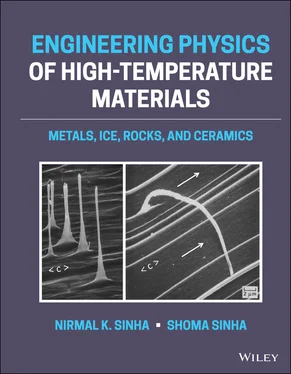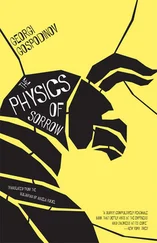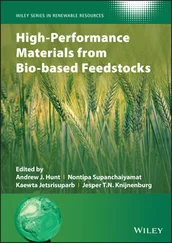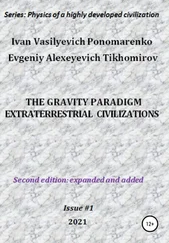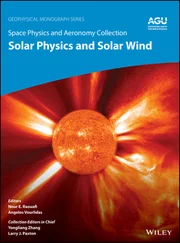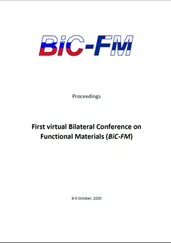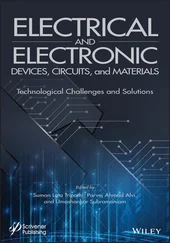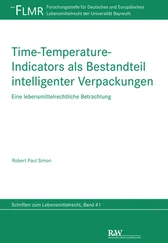Nirmal K. Sinha - Engineering Physics of High-Temperature Materials
Здесь есть возможность читать онлайн «Nirmal K. Sinha - Engineering Physics of High-Temperature Materials» — ознакомительный отрывок электронной книги совершенно бесплатно, а после прочтения отрывка купить полную версию. В некоторых случаях можно слушать аудио, скачать через торрент в формате fb2 и присутствует краткое содержание. Жанр: unrecognised, на английском языке. Описание произведения, (предисловие) а так же отзывы посетителей доступны на портале библиотеки ЛибКат.
- Название:Engineering Physics of High-Temperature Materials
- Автор:
- Жанр:
- Год:неизвестен
- ISBN:нет данных
- Рейтинг книги:3 / 5. Голосов: 1
-
Избранное:Добавить в избранное
- Отзывы:
-
Ваша оценка:
- 60
- 1
- 2
- 3
- 4
- 5
Engineering Physics of High-Temperature Materials: краткое содержание, описание и аннотация
Предлагаем к чтению аннотацию, описание, краткое содержание или предисловие (зависит от того, что написал сам автор книги «Engineering Physics of High-Temperature Materials»). Если вы не нашли необходимую информацию о книге — напишите в комментариях, мы постараемся отыскать её.
Discover a comprehensive exploration of high temperature materials written by leading materials scientists Engineering Physics of High-Temperature Materials: Metals, Ice, Rocks, and Ceramics
Engineering Physics of High-Temperature Materials (EPHTM)
Engineering Physics of High-Temperature Materials
Engineering Physics of High-Temperature Materials: Metals, Ice, Rocks, and Ceramics
Engineering Physics of High-Temperature Materials — читать онлайн ознакомительный отрывок
Ниже представлен текст книги, разбитый по страницам. Система сохранения места последней прочитанной страницы, позволяет с удобством читать онлайн бесплатно книгу «Engineering Physics of High-Temperature Materials», без необходимости каждый раз заново искать на чём Вы остановились. Поставьте закладку, и сможете в любой момент перейти на страницу, на которой закончили чтение.
Интервал:
Закладка:
As described in Chapter 5, SRRT methodology was based on experimental observations on glass, an amorphous material. It was extended to ice that is crystalline. Eventually, SRRTs were performed on a titanium‐base alloy, Ti‐6246, a wrought nickel‐base alloy, Waspaloy forgings, nickel‐base precipitation hardened superalloys, IN‐738LC, and single‐crystal superalloys. Minimum creep rates were also examined using SRRTs. Both viscous strain rate and the minimum creep rate were shown to obey the same power‐law dependence on stress with equivalent stress exponents. SRRTs also allowed investigations of the stress sensitivity of the delayed elastic strain. Similar to the viscous flow, varying from a linear to a highly nonlinear response, delayed elasticity was also shown to vary from linear to nonlinear, though to a lesser extent. In Chapter 5, we have also discussed SRRTs performed on a [001]‐oriented nickel‐base single‐crystal, CMSX‐10, in the temperature range 1073–1273 K for conditions where rafting of γ ′ did not play a major role. Long‐term creep recovery, over several months, allowed examination of reversible delayed elastic strain. For a total strain of 15%, the delayed elastic strain was found to be about 0.15 or 25% of the elastic strain. A possible relationship has been proposed between the delayed elastic strain measured at 15% strain and area fraction of γ ′ facet‐sized cracks for the onset of ultimate fracture. Nonetheless, delayed elastic effect in the single‐crystal material could not be detected during the primary creep period of small strain of engineering importance.
The lack of a reliable, simple – with a limited number of material constants or parameters – microstructurally sensitive, three‐dimensional constitutive model of polycrystalline materials at high homologous temperatures is the stumbling block against the use of sophisticated computer modeling and numerical simulations available today. A successful constitutive equation should have a physical basis and be able to describe the features that can be readily seen in the real field conditions. Such a model for inelastic deformation must be able to predict the usual empirically derived relations and be adequate for extrapolation to account for the effects of microstructural altercations or loading conditions. Moreover, such a model must be capable of predicting delayed elastic phenomena that can be quantified on the removal of the external driving forces. This means, predictability of the rebound of the structure on partial or full unloading should be built in the model. To date, most constitutive equations are highly empirical in nature and are useful for interpretation in the range investigated, but inadequate for extrapolation.
The chronology of the development of the three‐term rheological model, called EDEV model, is described in Chapter 5. This model relies on the incorporation of grain‐boundary shearing processes to relate with the delayed elastic phenomenon. A review of the phenomenological aspects of the failure processes at elevated temperatures is presented in Chapter 6. The crucial roles played by the phenomenon of delayed elasticity are examined in depth. Delayed elasticity can be linked to the predictability of the conditions necessary for the onset of grain‐facet‐sized crack formation and the kinetics of microcracking ( Chapter 7). This leads to the development of the crack‐enhanced EDEV model that can handle, for example, the strain‐rate sensitivity of strength of polycrystalline solids at high temperatures ( Chapter 8). EDEV is a nonlinear constitutive equation for high‐temperature applications. It consists of elastic, delayed elastic, and viscous components corresponding to three micromechanisms: lattice deformation, intergranular shearing/sliding, and intragranular dislocation motion. The model incorporates the predictability of the onset of cracking activity and damage accumulation due to the mechanism(s) of high‐temperature grain‐boundary embrittlement.
Grain facet long cracks develop when a critical grain‐boundary sliding or shearing (gbs) displacement or an equivalent delayed elastic strain is reached. Further damage is given in terms of the excess gbs, displacement over its critical value. As cracks form, they enhance the deformation matrix affecting the overall creep rate, leading to a minimum rate and then tertiary creep. Formulations have been developed in Chapter 8, using this model, for predicting the deformation and cracking activity for conditions of constant strain‐rate strength tests. The theory was tested with published experimental data on the strain‐rate sensitivity of the compressive strength of transversely isotropic, columnar‐grained, pure polycrystalline ice with a load applied in the plane of isotropy. Calculations using material constants were obtained from constant‐stress creep and recovery (SRRT) experiments totally independent of the strength tests. One‐to‐one correspondence of theory and experiments was noted for the dependence of strength, failure strain, and failure time on strain rate. The theory has the capabilities for predicting the popular empirically obtained relations between these quantities, such as the MG relationship. The EDEV theory also points out the limitations of the empirical relations, for example the inapplicability of the empirical power‐law relation between t fand σ for between ε fand strain rate. It is shown that strain‐rate sensitivity of volumetric dilatation can also be reasonably predicted.
The EDEV model has been extended to stress relaxation tests (SRTs) at elevated temperatures in Chapter 9and applied successfully to nickel‐base superalloys, like In‐738LC, titanium‐base alloys, like Ti‐6246, and polycrystalline ice (especially the grain‐size effects on stress relaxation). Theoretical predictions on total strain as well as the components of elastic, delayed elastic, and viscous strain at any time during creep and SRTs can be examined and compared with experimental observations. EDEV model is based on observations that the viscous strain rate (for dislocation creep) is constant throughout the primary creep under constant stress (for conditions of no microcracking activities) and the shape of the primary creep is governed by delayed elastic deformation that is recoverable on unloading. The acid tests of the developed model are provided by the comparisons between the predicted permanent strain and the recovered elastic and delayed elastic strain components with the corresponding experimental observations of both SRRTs and SRTs. Since delayed elastic response in single‐crystal materials may be neglected, the EDEV model reduces to a simple nonlinear elasto–viscous relation, as presented in Chapter 5, for most of the deformation of engineering design purposes.
But why does the viscous strain rate, associated with dislocation creep, appear to be constant during normal primary or transient creep? This SRRT‐based experimental observation in single‐phase crystalline materials and complex crystalline materials, including at least one rock type, ice, and complex alloys, goes against the dislocation theories developed over many decades. Theoreticians have to modify some of the classical assumptions and start working on the development of some new ideas.
1.8 Paradigm Shifts
The Oxford English Dictionary defines paradigm (pær&ip.schwa;da&ip.iscp;m) as “example or pattern, esp., of inflexions of noun, verb, etc.” (Simpson and Weiner 1989). In science and philosophy, a paradigm may be considered as a distinct set of concepts or thought patterns that have developed to guide workers in a specific area. In his book, The Structure of Scientific Revolutions , Kuhn (1996; first published in 1962) defines a scientific paradigm as: “universally recognized scientific achievements that, for a time, provide model problems and solutions for a community of practitioners.”
Читать дальшеИнтервал:
Закладка:
Похожие книги на «Engineering Physics of High-Temperature Materials»
Представляем Вашему вниманию похожие книги на «Engineering Physics of High-Temperature Materials» списком для выбора. Мы отобрали схожую по названию и смыслу литературу в надежде предоставить читателям больше вариантов отыскать новые, интересные, ещё непрочитанные произведения.
Обсуждение, отзывы о книге «Engineering Physics of High-Temperature Materials» и просто собственные мнения читателей. Оставьте ваши комментарии, напишите, что Вы думаете о произведении, его смысле или главных героях. Укажите что конкретно понравилось, а что нет, и почему Вы так считаете.
